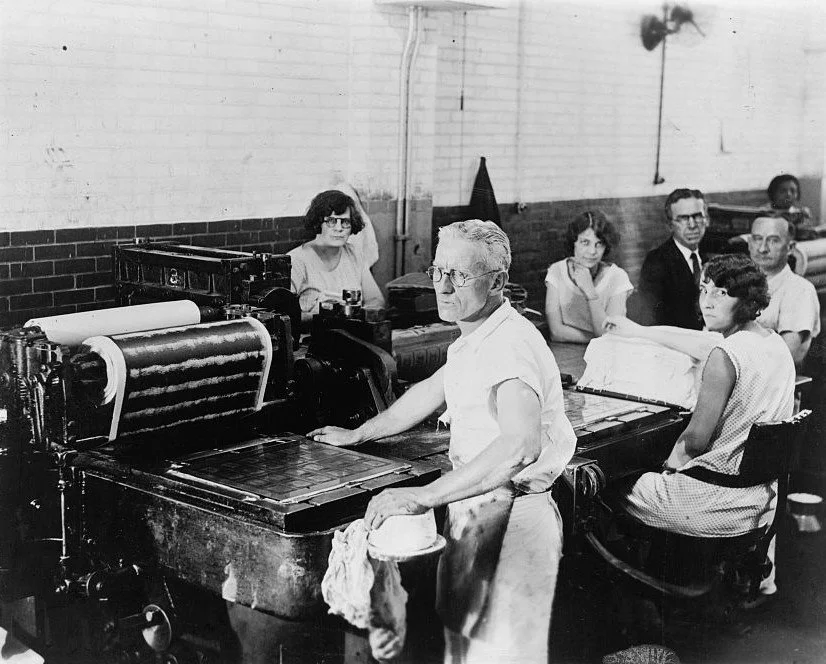The Revolution in Banknote Printing
A revolution occurred in banknote printing in the mid-twentieth century. This was the transition from the wet method to the dry method of intaglio printing.
Until the mid-1900s, banknote printing involved the repeated moistening of sheets before each printing. Wet printing was necessary because the flatbed presses and later four-station power presses (pictured) did not produce a great deal of pressure on the printing plates. So, the paper needed to be moistened to make it more pliable. And, this is why currency paper at the time had a high linen content. Linen was more pliable than cotton.
This wet method of printing limited sheet size and thus the number of banknotes that could be printed on each sheet. The problem was that wetting and drying the sheets caused them to expand and shrink in unpredictable ways, leading to registration problems.
A way was needed to print banknotes on dry paper. Two developments were needed to attain dry printing: more powerful presses and quick-drying, non-offsetting inks.
By the mid-1950s, new inks were available to allow dry printing. And, new, rotary intaglio presses were coming onto the market that exerted far greater forces than the old power presses. So, by the late 1950s, the dry-printing revolution had arrived. The rest is history.

